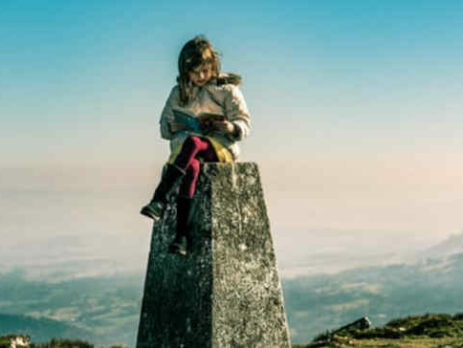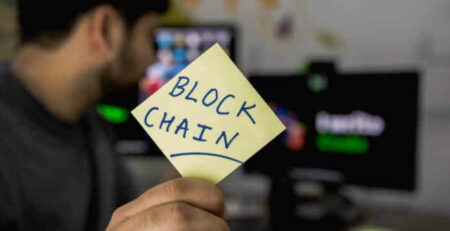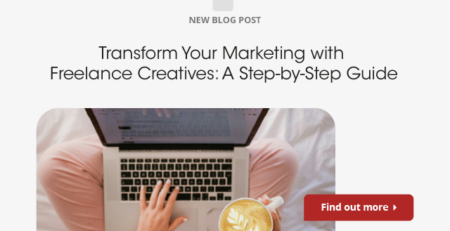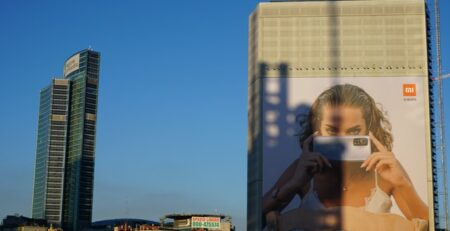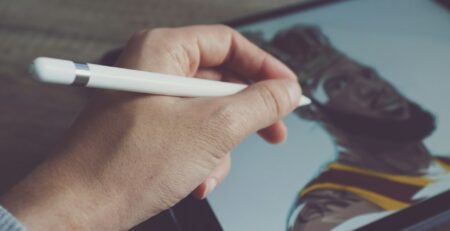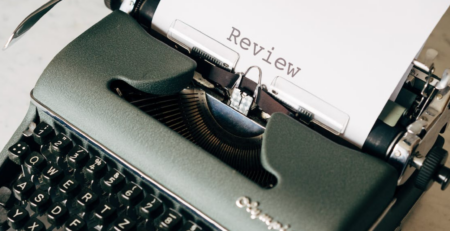Creative Tips for Strong Visual Storytelling
People process visual elements faster than written ones. Crafting a story for the user organizes these visual elements so that they are enticing and enjoyable, making the recipient more likely to respond positively to a call to action.
There’s no surefire method for crafting a visual narrative with broad appeal, but the tips for creatives we’ve included in this guide will help designers stay on the cutting edge and outshine the competition. Keep reading to learn a few ways designers can improve their visual storytelling to make their work more appealing to the user.
Storytelling and Visual Design
Design blends creative approaches and business goals. When it comes to creating enjoyable content and ensuring viewers will respond positively, storytelling is a key tool.
But what is storytelling when it comes to design and design thinking? Storytelling is an organizational method that brings ideas to life. The path the user takes with a brand and product should create a story when viewed as a whole. Storytelling and visual design help build that creation.
Stories in books rely principally on language, but that’s far from the only method designers can use to build meaning for viewers and users. Visual storytelling is a central aspect of graphic design and UX design. Building a design that transforms as users interact with it empowers the user to craft their own story.
If we compare the story in a novel or movie to the visual storytelling creatives construct, it could be said that the various design elements are like plot points. There may not be many characters, so to speak, but the user should feel like they are the center of the designed product.
Learning the Language of Visual Design
Since the advent of the internet, certain conventions have arisen. The scrolling and swiping motions, for example, appear to have lots of staying power. However, the way designers are incorporating these elements into the visual language of their products varies.
In some sense, the language of visual design is constantly changing even when it relies on conventions that have been around for decades. Think about the standard Save icon, an image of the long-obsolete floppy disk. The convention persists because the general function is the same although the method is completely different.

But visual design can also be static. In that case, the eyes of the viewer will be doing most of the work. So designers should aim to create images whose meaning unfolds to the viewer in stages. This makes the image more alluring and increases the length of time in which the user will remain engaged with it.
Aesthetic theories like the Gestalt Principles help give creatives avenues to express the ideas they hold in their imaginations. Rather than being restrictive formalism, they are dynamic and may be employed in a variety of ways to get the point across and create more engaging work for viewers.
Designing for Businesses
Since design thinking is a problem-solving structure for accomplishing business goals with creative and innovative approaches, visual design must also take these goals into consideration. But the brand – viewer channel is not the only avenue where visual design language helps make communication easier.
Stakeholders like managers or other non-creatives can better understand the theories and ideas of creative team members if they have clear representations that greet them on their terms. The tips for creatives in this guide are useful not only for building better visual products for customers but also for explaining complex design thinking for stakeholders.
Interior Visual Design Language
In addition to the broader idea of design language, particular products and brands typically have their own internal design language. Branding strategies use this language to add consistency between product lines and services within the larger umbrella of the parent company or business.
Storytelling on this meta-level is even more important because it is the essential personality of the brand. Ensuring that each new project or marketing drive shares the same branding is the same as building a strong internal design language.
Crafting a cohesive story makes varied and changing communication feel more like intentional communication and less like disparate advertising pushes that view the customer or user as little more than a source of profit. Plus, it increases customer engagement and helps foster brand loyalty, creating a customer base that will return again and again to the company whenever they need its products or services.
8 Tips for Creatives to Craft Strong Visual Storytelling
Whether you’re working on an element of the larger branding strategy, marketing materials, or the design language for a particular project, certain strategies will help create an entertaining and informative story for the user. Try out these 8 tips for creatives to blend storytelling and visual design into an enticing and appealing final product.
1. Create the Anchor First
Likely, designers and other people on the creative team aren’t sure what all the individual elements of the visual design will look like from the outset. But during the early stages of the design thinking process, you can identify certain aspects that are going to be central to the design. Highlight these as anchor points and build up from there.
The key to using this tip for creatives effectively is to make sure you’re basing these anchor points on the goals of the project and the real viewers, as opposed to the idealized ones stakeholders or creatives might have in their imagination.
UX research and user or viewer opinions should be included when identifying what your anchor points will be. Further considerations might include what elements of the design make it stand out and what is innovative about it, but both of these should also stem from evidence gathered during user research.
Often these anchor points become the main characteristic of the design that stands out in peoples’ minds. Don’t be afraid to make adjustments to anchor points throughout the design process, though. As long as the anchor point(s) stand out in the final product, it will likely have staying power with the viewer.
2. Limit Yourself At First
There are tons of colors, shades, and shapes designers can use to construct a language. Simplify the early brainstorming stages by restricting yourself to 5 – 6 colors and further limiting the shades and shapes you’ll employ with those colors.
Just like the anchor points, setting these limits doesn’t mean you can’t change them if something doesn’t seem to be working well. If you want to swap out colors, the positive impact of limiting your options will still stand. Designers can be overwhelmed by too many options just like anybody else can, so narrowing the possibilities should create usable brainstorming material faster.
Another way to create limits is to reduce the amount of other visual designs in your mind. Looking at existing work is a great source of inspiration, but if you spend too long looking at what other designers are doing, it could create clutter and noise. Stay informed on what the competition is up to so you can stay on the cutting edge, but don’t spend too long looking at them or you could unintentionally mimic others.
3. Build Balanced Compositions
Three kinds of elements exist in a balanced composition: large ones, medium ones, and small ones. Large elements are the background or overall shape of the image while a medium element helps create a focal point and small elements create a visual texture.
Imagine a logo redesign project for a large social media company whose existing logo is a cartoon smiley face. In that case, you can make a balanced composition by making the background (large element) work with the head shape (medium element) to create a focal point and add eyes, ears, a nose, and a mouth (small elements) to make the logo more distinctive.
That’s an overly simple example, but it still serves to demonstrate how the scale of the image should work at all levels. Balanced compositions in this style feel automatically appealing and enticing, causing viewers to look at them and remember them longer.
4. Add Mystery
Design thinking identifies pain points and attempts to find solutions for them in the same way you might answer a question. Give the user the same kind of problem to solve within the visual language and you have the most essential element of any enticing story.
The mystery shouldn’t be confusing or overly complicated. It might be a facial expression that doesn’t seem to suit the context at first. It could also be an object out of place or the indication of some action about to take place in the near future.
Even if you’re working on a still image, you can still illustrate the near future. Embrace unreal depictions if it suits the branding language and you can show thoughts, actions, and aspirations even if the objects of the design aren’t moving.
Try to answer the mystery – or at least the possibility of a solution – within the design. Ideally, this solution would be a call to action (COA) that engages the viewer with the brand, but it should increase their curiosity about the brand at a minimum.
5. Research & Iterate Continuously
Anyone familiar with design thinking knows that iteration is a central part of the process. One mistake many creatives make is to separate research from that iteration.
If you see some part of the design failing, research illuminates why it is failing. That research might be as simple as asking users why they don’t like the design or it could require more extensive user testing and drawing conclusions from mountains of data.
For visual designers working in still mediums, the iteration may appear to be easier since they can start a new design more quickly. That’s true as long as none of the iterations took too long. Continuous research and testing will save time on wasted prototypes and ideas.
Motion visuals like video or animated GIFs aren’t much different. If you build an entire graphic video or animation and then find it doesn’t quite achieve the goals it was meant to, that’s a lot of wasted time. But A/B testing on aspects of the design will save time and also help identify what your anchor points should be to maximize appeal to possible viewers.
6. Rely On Community
Sometimes the subject matter of a design project is highly technical. The visual strategies being used may also be highly innovative or perhaps the creative team is relatively new. In any of these cases, reaching out to professionals with experience and knowledge of the subject matter will help designers find new information and gain a greater understanding of what they’re trying to illustrate.
Even when the subject matter is not particularly technical, building a community of professionals to brainstorm is a good way to make the work feel more fun and expand brainstorming sessions. It’s best to find people with expertise that creatives might not be likely to have. If these people are stakeholders within the same company, so much the better for everyone involved.
Mentorships and other formal structures for consulting more experienced people are one way to go about this. Other methods include surveying or consulting people with relevant technical knowledge. Usually, technically-minded people are happy to get a glimpse into the creative world and the opposite is also true. Designers would also do well to remember that their intended users are also part of a community between the brand and the public.
7. Embrace the UI Audit
This is an especially important tip for creatives working on redesigns or projects where some branding has already been employed. Auditing the existing UI ideally results in a clear and concise grouping of design elements like buttons, icons, or navigation bars into defined groups so that designers can approach them individually and holistically.
When creative talent moves companies or the brand identity spans decades, UI audits help new generations of design staff understand how certain projects worked and why the existing brand strategy looks the way it does. Everything from the color palette to fonts should be examined during this audit and placed within the structure of the entire project.
As you work, you can also leave behind notes or diagrams to illustrate the design thinking during an ongoing project to facilitate UI audits in the future. Designers can build a community between people who can’t physically meet with effective record keeping and explanations for posterity.
8. Create a Design Vision
Beyond simply setting business goals and attempting to address them with design methodology, the creative team should be researching to see how people perceive the brand, what the competition is doing, and how their product or service stands out. The design vision should completely address how the branding and visual design will positively impact the viewers.
Define a design hierarchy based on the vision established through the research into users and the competition. Evolution in visual design stems from innovative design hierarchies, almost directly from these elements and their impact on the overall design vision. But you should also make sure that your vision is flexible to address new concerns should they arise.
The final product should be scalable, empathetic, and novel. If it’s a marketing campaign that uses primarily still images, designers should be able to send the same message in an email blast that people will see on a billboard from their car. If visual motion mediums are used, then online animation and television commercials should demonstrate a cohesive brand.
Storytelling and visual design should form the defined vision in motion. If you build the vision carefully and thoroughly, then the storytelling will feel more natural and be that much more effective.

Conclusion:
Storytelling and visual design go hand in hand because they both seek to communicate a cohesive idea to their viewers. The storytelling used in design may not be the same as the kind you’d find in a novel or a movie, but it still makes visual products more enticing and useful for the people who see and use them.
Use the tips in this guide to approach visual storytelling from an organized and informed position. Creatives will be in a much better position to create effective on-brand messaging that appeals to and entices people when put all these strategies into action.

